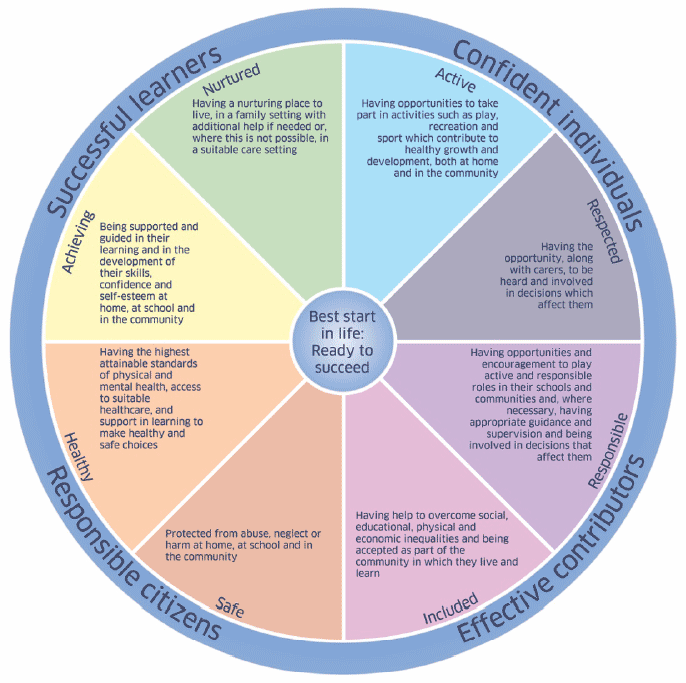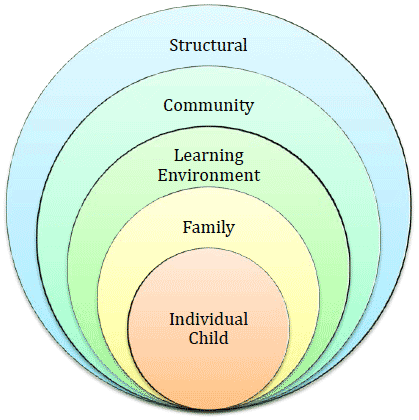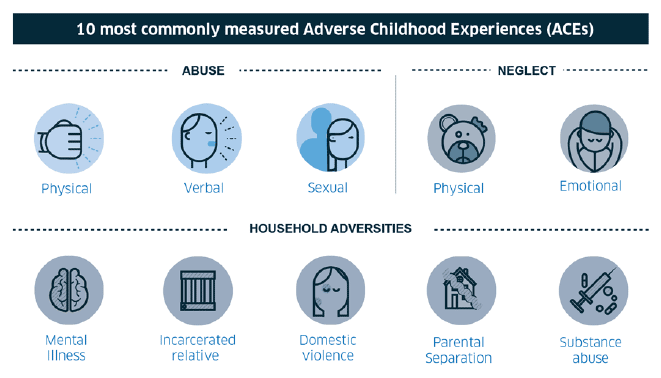Child and adolescent health and wellbeing: evidence review
Maps available national data on child health and wellbeing against the SHANNARI domains, to produce a full and detailed picture of ‘where we are now’ on child health and wellbeing in Scotland.
1. Introduction
This paper summarises the available evidence on child and adolescent health and wellbeing in Scotland. It presents the national quantitative data from a variety of sources to produce a picture of the current situation in terms of health and wellbeing outcomes for children and young people, as well as key drivers of wellbeing.
1.1 Background
Children's and young people's wellbeing has been widely acknowledged as being a key driver to positive life course trajectories. The Children and Young People (Scotland) Act 2014, which includes key parts of the Getting it Right for Every Child approach ( GIRFEC), defines Child Wellbeing in terms of 8 indicators of wellbeing: Safe, Healthy, Active, Nurtured, Achieving, Respected, Responsible and Included (known as SHANARRI ) (see Figure 1). This recognises that children's well-being is multi-faceted and that it is important to measure it holistically across all the various domains that are relevant to a child's life.
Figure 1 SHANARRI wellbeing wheel

Inherent in this approach is an understanding that different wellbeing outcomes may also act as drivers of other aspects of wellbeing, either at the same time or in the longer term. Not only is positive wellbeing an important outcome in and of itself, it also increases children and young people's resilience, enabling them to achieve and maintain positive wellbeing even in adverse conditions or circumstances.
Evidence reviews into drivers of child health and wellbeing distinguish between 'protective factors' that eliminate risk or facilitate resilience, and have a positive impact on outcomes; and 'risk factors' that cause negative outcomes. Protective and risk factors sit at a number of conceptual levels, which interact with each other, as illustrated in Figure 2:
- Individuals child drivers: Learning and development, healthy living, general health, mental health, spirituality, emotional intelligence
- Family drivers: Family relations, family structure, parental healthy living, parental health
- Learning environment drivers: Teacher support, peer and friend relationships, educational environment, pressures and expectations
- Community drivers: Participation, social networks, social support, trust, safety
- Structural drivers: Wider economy and labour market, poverty and wealth, welfare and housing, social inclusion, discrimination, physical environment, violence, culture
Figure 2 Levels of drivers of wellbeing

Risk factors often cluster together and young people who experience one risk factor are more likely to experience others and outcomes may then compound each other.
A number of risk factors are classed as Adverse Childhood Experiences ( ACEs) which can have long-term detrimental effects on people's health and wellbeing, particularly when someone experiences multiple ACEs in childhood. ACEs are stressful and/or traumatic events and experiences occurring in childhood (0-18 years). The ACEs that are typically measured consist of various types of childhood abuse and neglect, and family-related difficulties (see Figure 3).
Figure 3 Adverse Childhood Experiences

There is strong evidence that as the number of ACEs increases the risk of developing health harming behaviours increases, which can lead to numerous negative health and social outcomes. The ACEs literature also highlights the importance of resilience (protective factors) in mitigating the impact of ACEs. This is discussed in more detail in the relevant sections in the following chapters. Although ACEs are experienced across the whole income spectrum, the negative impacts of ACEs are more highly associated with deprivation. People living in deprived areas are more likely to experience a higher number of ACEs and have less access to resilience-building resources than those living in more affluent areas.
1.2 Data in this paper
For consistency with the Scottish Government's multifaceted understanding of children's wellbeing, this paper presents the data under the eight headings of the SHANARRI wellbeing wheel. It is important to remember that this approach seeks to provide a holistic picture of a child's situation in its environment. While specific indicators are discussed separately under one SHANARRI domain, there is clearly cross-over between different domains and they should not be taken in isolation.
The evidence presented here seeks to cover available evidence from national cross-sectional Scotland level sources on all aspects of children's wellbeing. Longitudinal studies, which follow a cohort of individuals over time, have not been included. While they provide a rich source of data for understanding the relationships between various drivers and outcomes, they do not allow for tracking of outcomes over time at Scotland level and are therefore outwith the scope of this report.
The indicators listed here should not be understood as targets, and a number of measures are included to provide a rounded understanding, some of which do not necessarily have a clear desired direction of travel. Although this paper is based on a review of all national data sources, it does not claim to be comprehensive, e.g. where there are several similar measures, not all are included.
1.3 Structure of the report
Each chapter begins with a discussion of the indicators under the relevant SHANARRI domain, presenting the background to how these factors relate to wider health and wellbeing outcomes for children and young people and discussing any issues around the interpretation of trends.
The second section of each chapter then presents the data for each indicator, as well as information about data sources. For each indicator, where data allows, trends over time, any notable socio-demographic differences and comparisons with other countries are listed. In relation to socio-demographic differences, reference is made to the Scottish Index of Multiple Deprivation ( SIMD), a measure of area deprivation. SIMD1 refers to the 20% most deprived areas while SIMD5 is the 20% least deprived areas.
The chapters conclude with a summary of key points within the given SHANARRI domain.
Chapter 10 provides and overall conclusion by drawing out key areas for action.
Contact
There is a problem
Thanks for your feedback